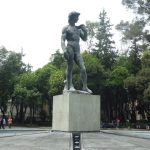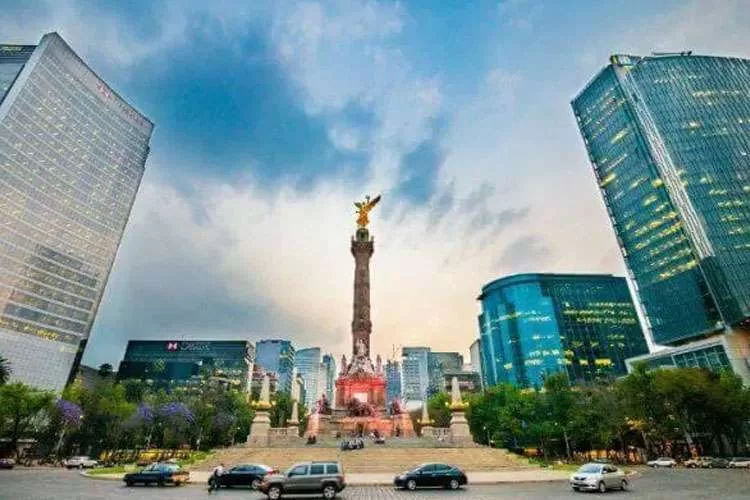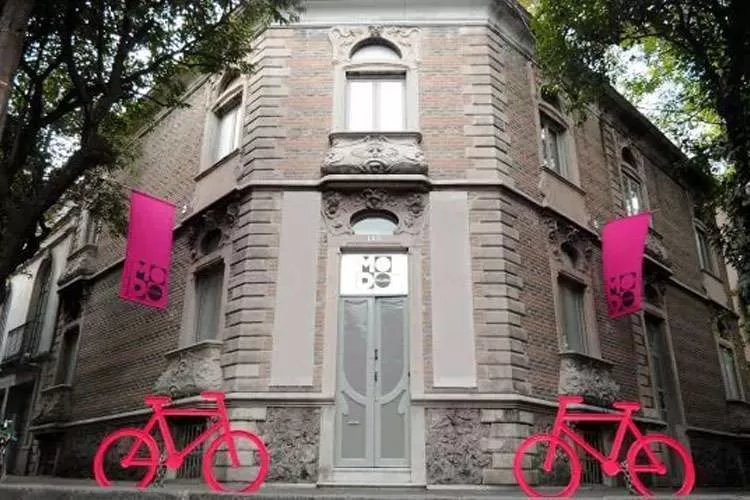
Experience an Unforgettable Summer in Mexico City
17 June, 2025
Discover the Heart of Colonia Roma: A Journey to the Past and Present at Plaza Río de Janeiro
19 July, 2025To talk about history and be within reach of it, you only need to visit any corner of Mexico City, which has sites and buildings that bear witness to the life that existed in different times, as do the historic buildings of the Roma neighborhood.
The capital of the country has changed dramatically over the years, from having pre-Hispanic buildings, some of which are still preserved, to the creation of European-style buildings that can be seen, above all, in neighborhoods such as Roma.
This neighborhood, one of the most vibrant in the capital, began to trace its history in 1903, when the lands of Potreros de Romita were occupied to build houses and delimit streets.
During the Porfiriato era this area began to take shape, but it was the Colonial era and the Carrancistas who contributed to its growth being much greater.
Since then, representative buildings from different eras began to be built, some of which are still standing, giving life to and beautifying one of the most famous neighborhoods in the capital, Roma.
Balmori Building
Built in 1922, the Balmori building is one of the most representative buildings in the Roma neighborhood, as its French style caught the attention of pedestrians passing by.
Some businesses were established in this building, but its main purpose was housing. In addition, so that people of that time had entertainment options, a movie theater was adapted in this building, which was no longer used and that space is currently a parking lot.
Everything was going well for the Balmori, until in 1990 some artists took over the facilities of the building with the sole purpose of saving it, as it was going to be demolished to build businesses.
Therefore, they improvised an art gallery as a show of defense and their effort paid off, because this historic building still stands and even has the declaration of Architectural Heritage by the National Institute of Fine Arts.
Location
Orizaba Street #102, corner with Alvaro Obregon Avenue.


The Witches' House
The historic buildings in the Roma neighborhood are also surrounded by legends, as is the case of a building known as "the witches' house," which was built in 1908 by engineer R.A. Pigeon, who probably did not imagine that his work would inspire prominent Mexican writers.
This Gothic-style building stands out for its elongated windows, the brick color of its facade, and a tower that has a point shaped like a pointed hat, something that the children of the schools surrounding the building associated with the hats worn by witches and that is why they began to call it as it is currently known.
One of the most famous stories about this place is that of "Pachita," a woman who lived in the service rooms of the building and who, according to urban stories, was a shaman who practiced healing in that place, a situation that increased the legends about this building.
The fame of “the house of witches” grew so much that even several writers took inspiration from it, such as José Emilio Pacheco, who wrote the novel “Morirás Lejos”, whose main plot takes place in this building.
Sergio Pitol and Carlos Fuentes are other authors who were inspired by this peculiar place to write “El Desfile del Amor” and “La cabeza de la Hidra”, respectively.
Location
This famous building is located exactly on the corner of Río de Janeiro and Durango streets.
Parish of the Holy Family
If there are certain types of buildings that abound in the capital of the country, those are, without a doubt, the churches. Such is the case of the Parish of the Holy Family that is located in the Roma neighborhood, a symbol of this area for its imposing architecture.
This temple, the first of its kind in the neighborhood, began to be built in 1910 and it was not until 1925 when the works were completed, resulting in a neo-Gothic style parish that little by little became a reference in Roma.
The architects Manuel Gorozpe and Miguel Rebolledo were in charge of creating a site that from its first years of operation, caught the attention of tourists for the polychrome stained glass windows that give its essence to this building.
The cultural activity that distinguishes the Roma neighborhood would not be complete without its churches and parishes, which, along with other types of buildings, bring together not only local residents every weekend, but also tourists who want to soak up a little of the customs of an ever-famous neighborhood.
Location
Calle Puebla #144, corner with Orizaba.

Without a doubt, learning about a city's history can be possible thanks to its buildings, which not only bear witness to the passage of time and the customs of different eras, but also hide legends that reflect the culture of each country.
For example, the historic buildings of the Roma neighborhood have even been saved by artists, and even thriller novels have been written thanks to them, making them must-see sites for tourists.
In addition to the "witches' house," the Sagrada Familia parish and the Balmori building, other buildings worth visiting are the El Parián shopping arcade, the replica of the Cibeles Fountain (Madrid), the Casa Lamm, the UNAM Book House, the Church of Nuestra Señora del Rosario and the Renacimiento Institute.
If you want to see and take pictures of these properties, you can stay at Stanza, a hotel located in the Roma neighborhood, which allows you to be close to all the artistic, cultural and gastronomic events that characterize this area of the capital.
Álvaro Obregón Avenue is where this hotel is located, so after touring the neighborhood and learning about its history, you can return to the restaurant here to taste a Mexican food proposal with Mediterranean touches, something that will undoubtedly close your walk through the streets of Roma with a flourish.
*And right on this avenue, in Álvaro Obregón, are some of the best lodging options in CDMX, such as the Hotel Stanza, in the heart of the Roma neighborhood, which has its own restaurant with a terrace and achieves an incredible mix of comfort and practicality.






